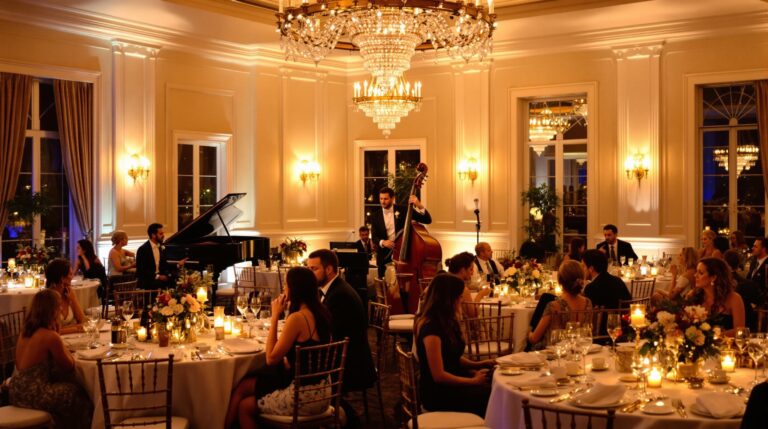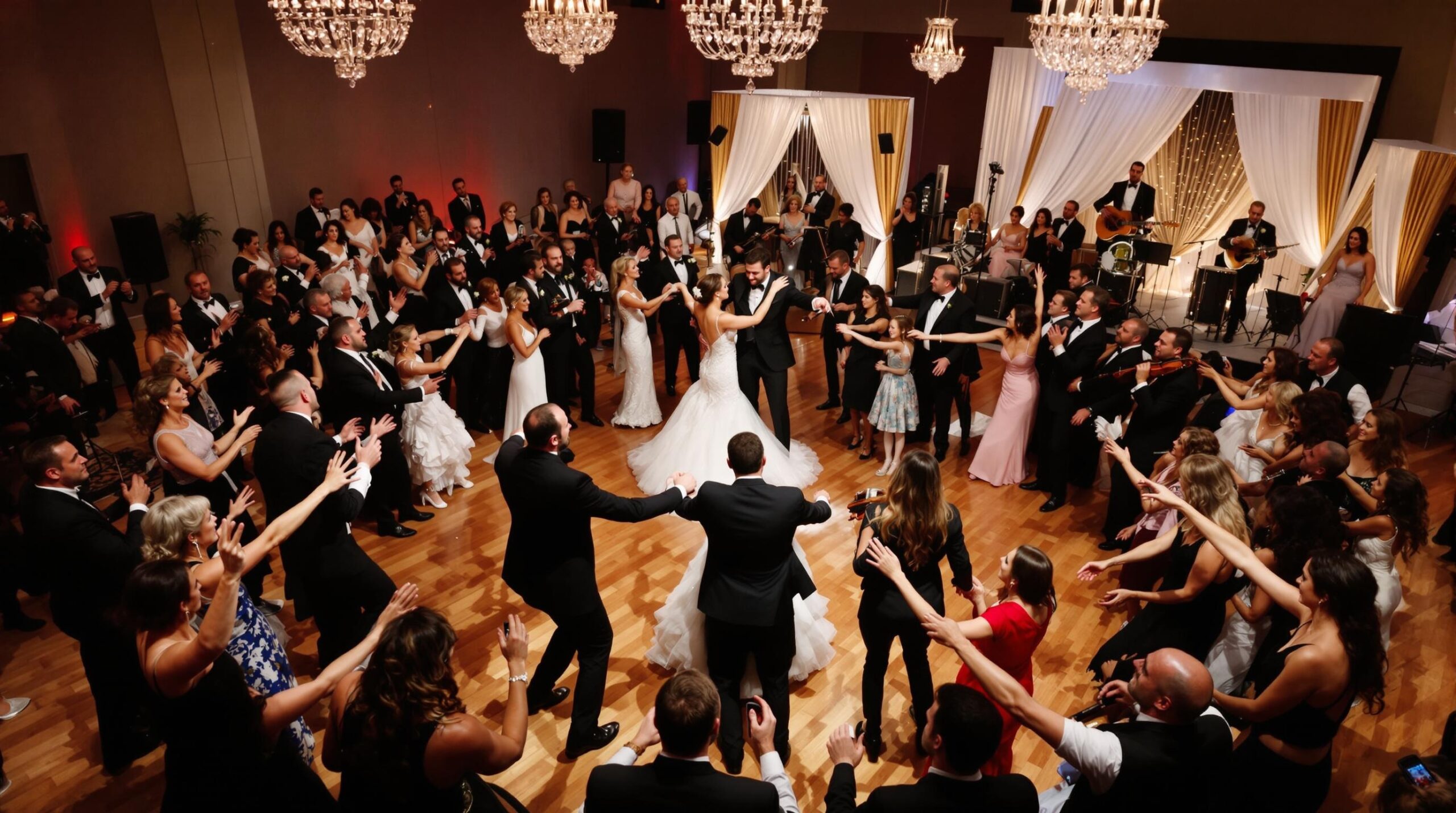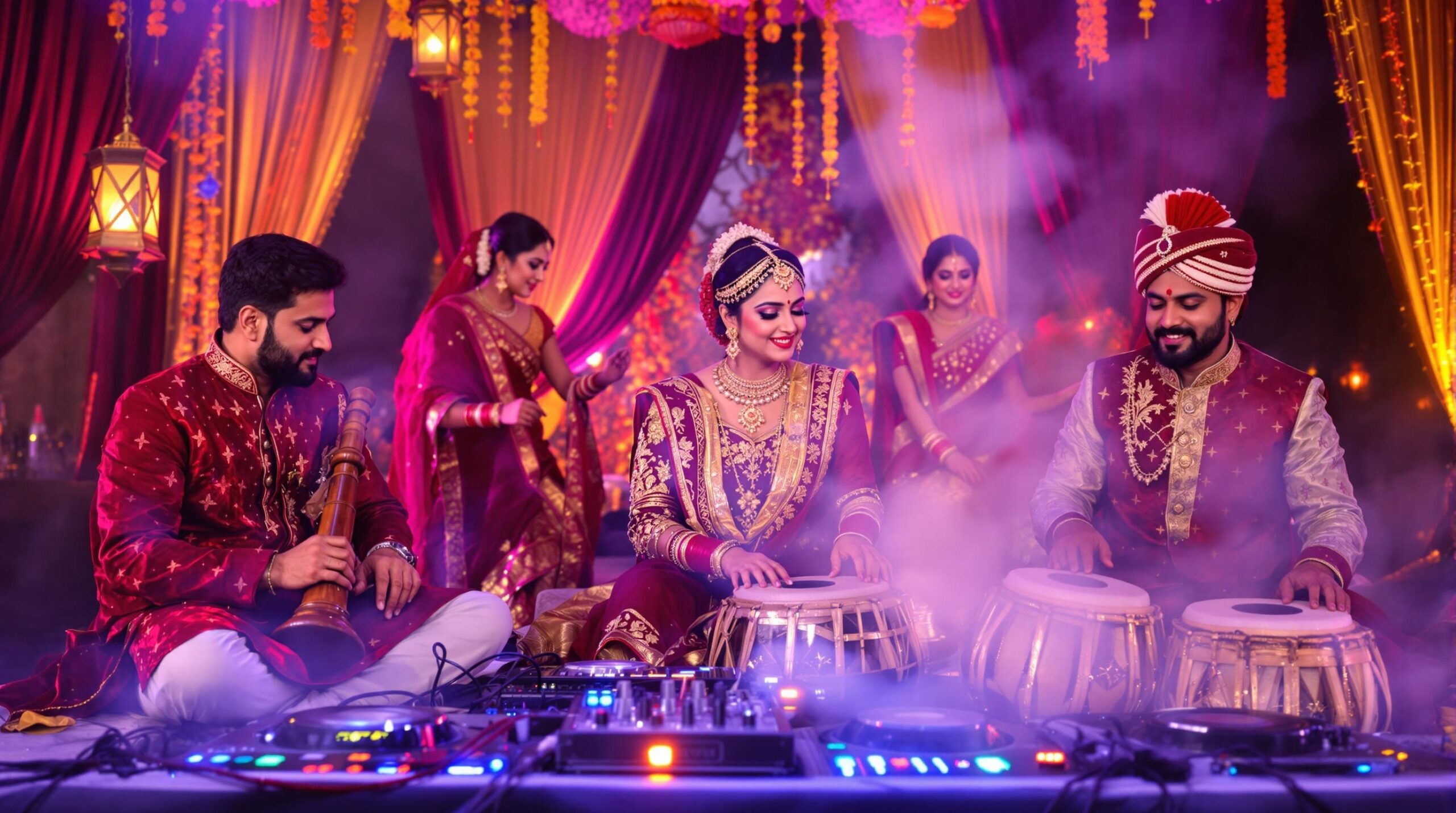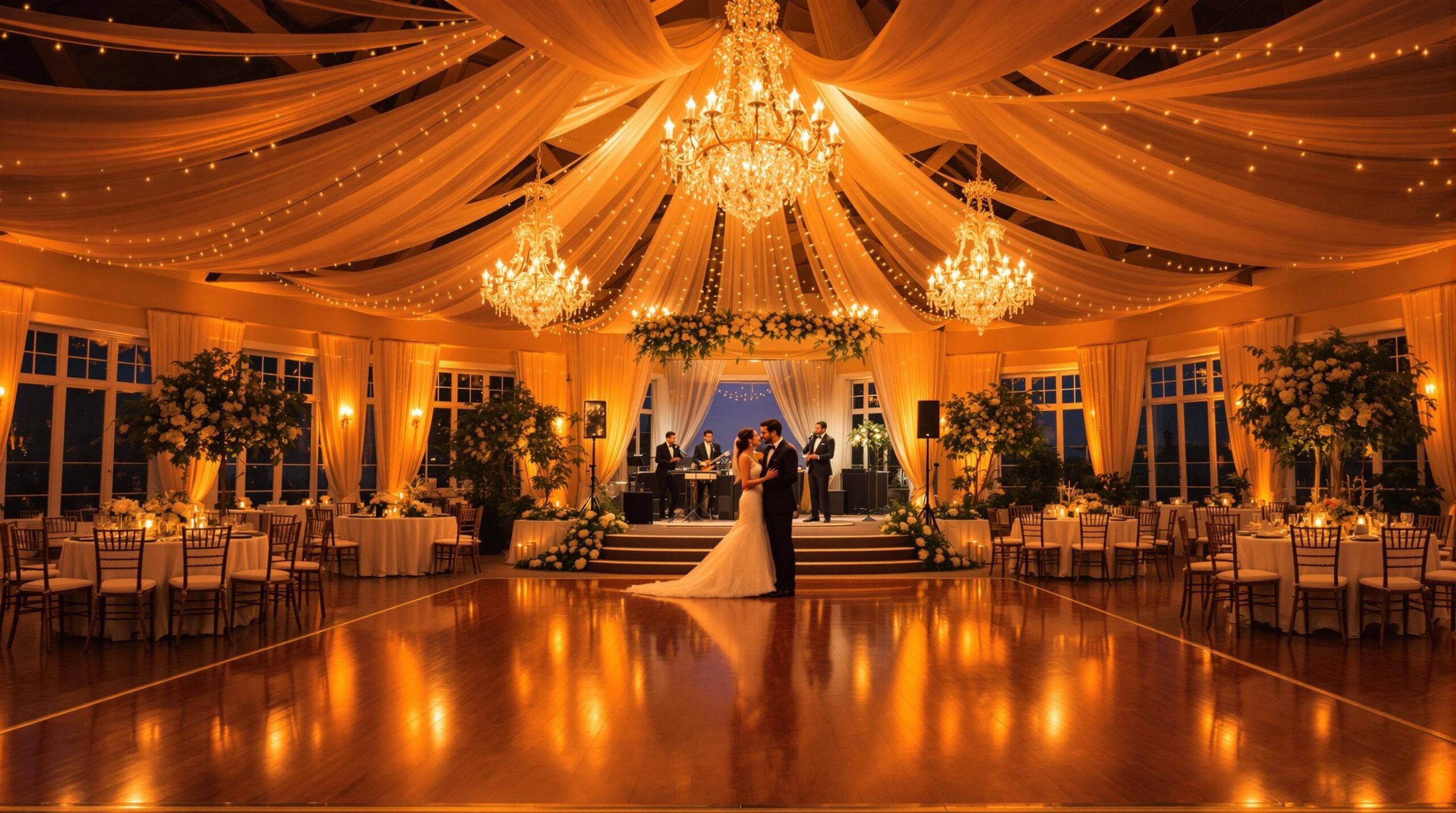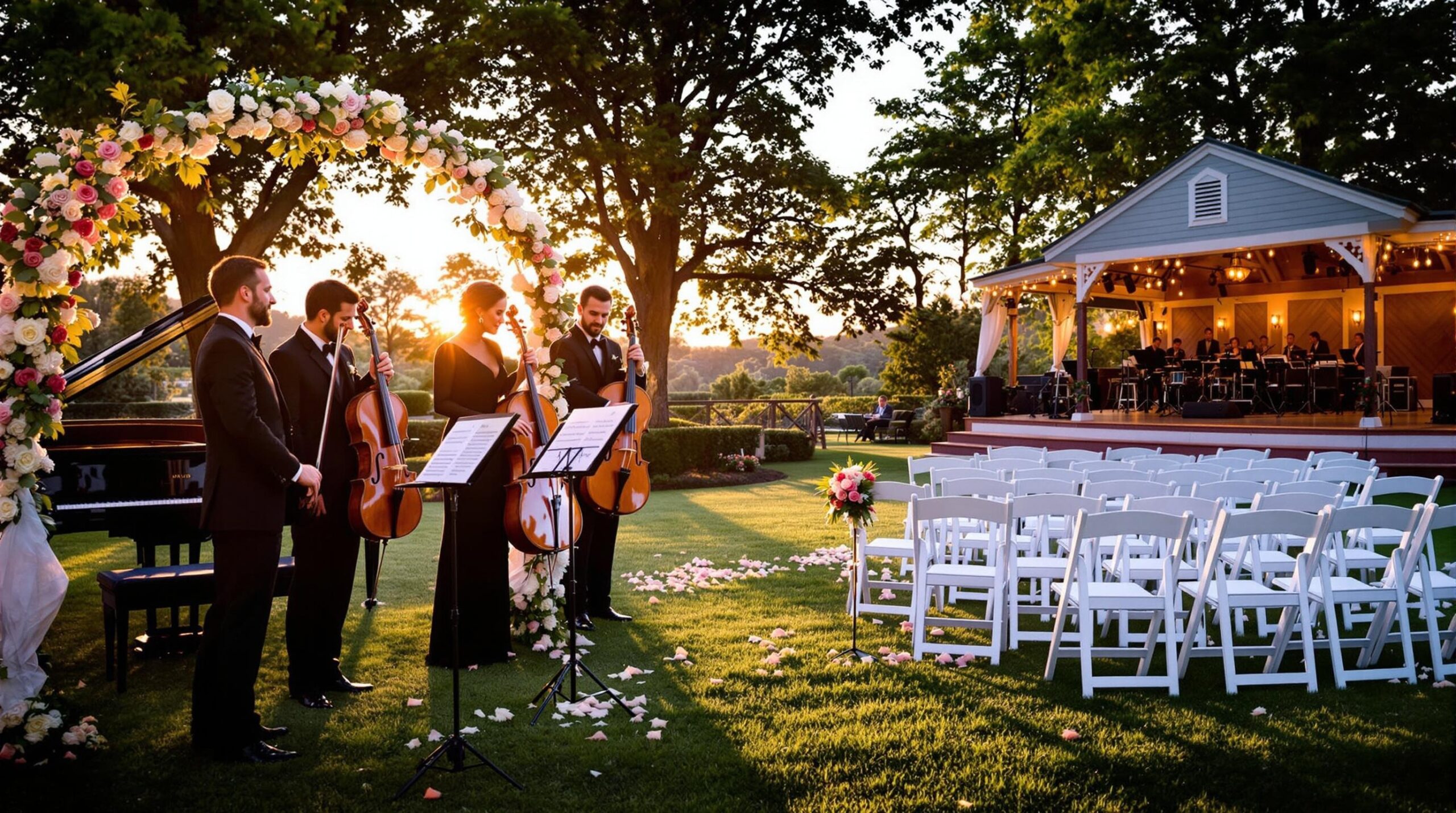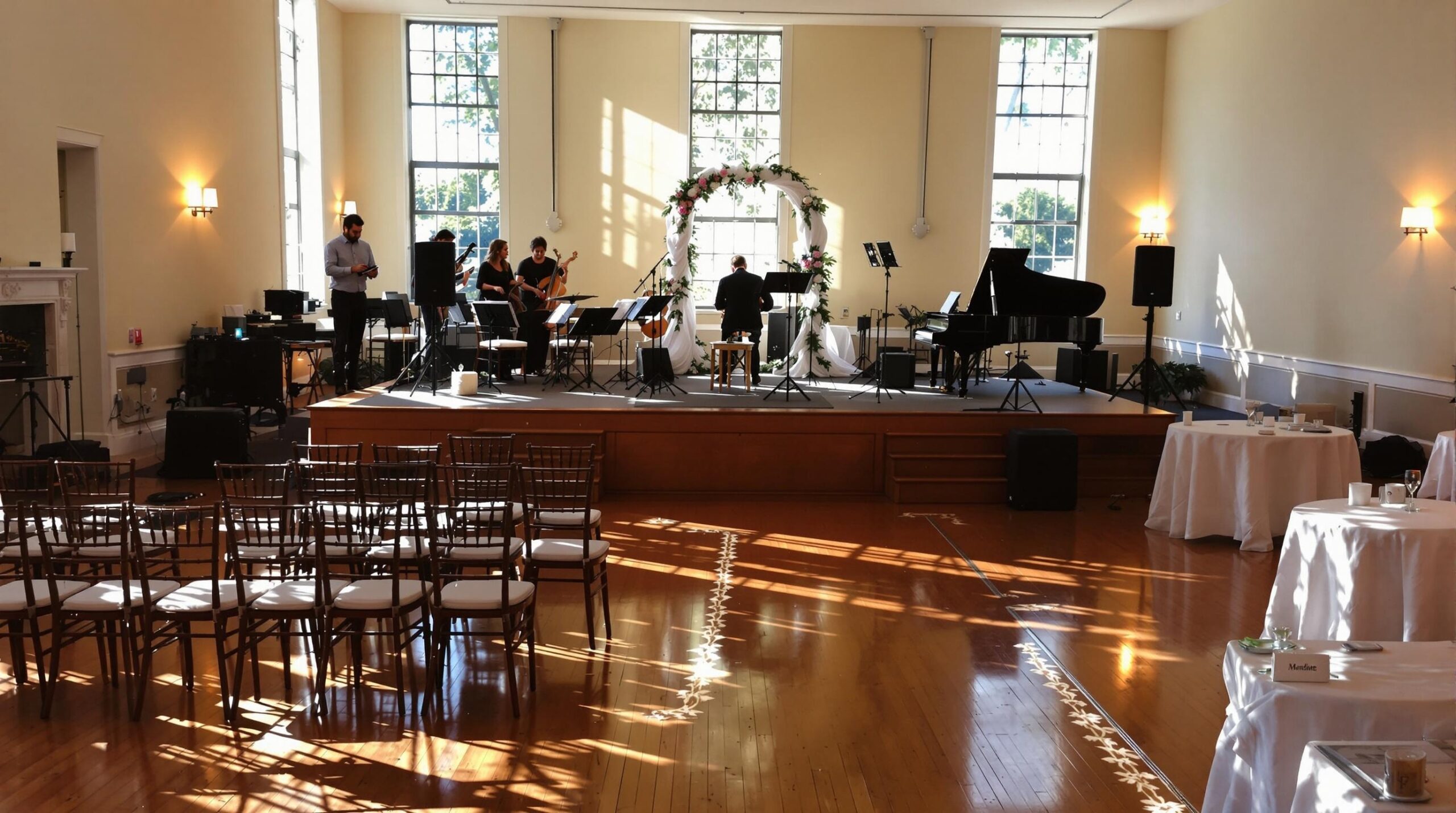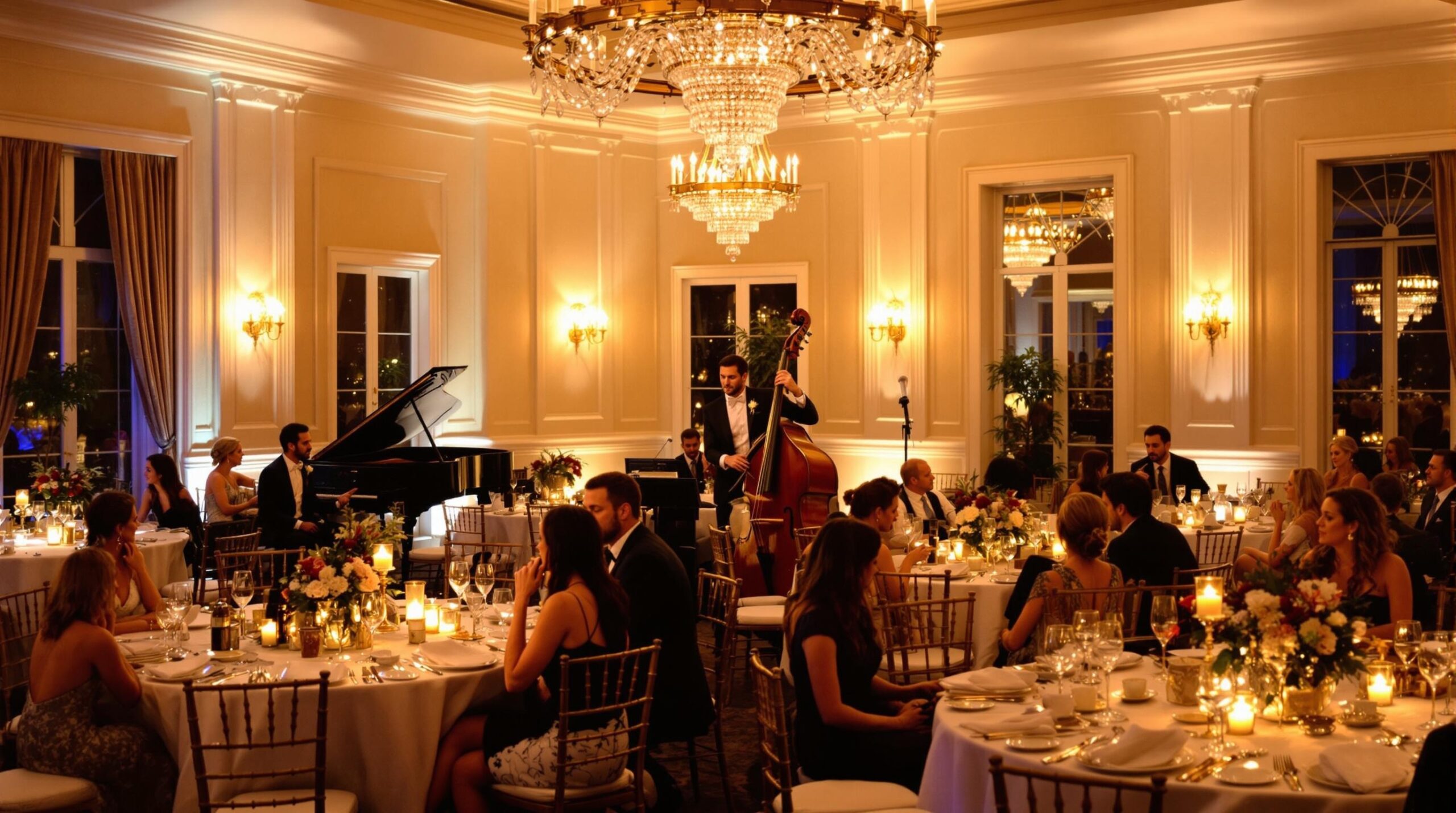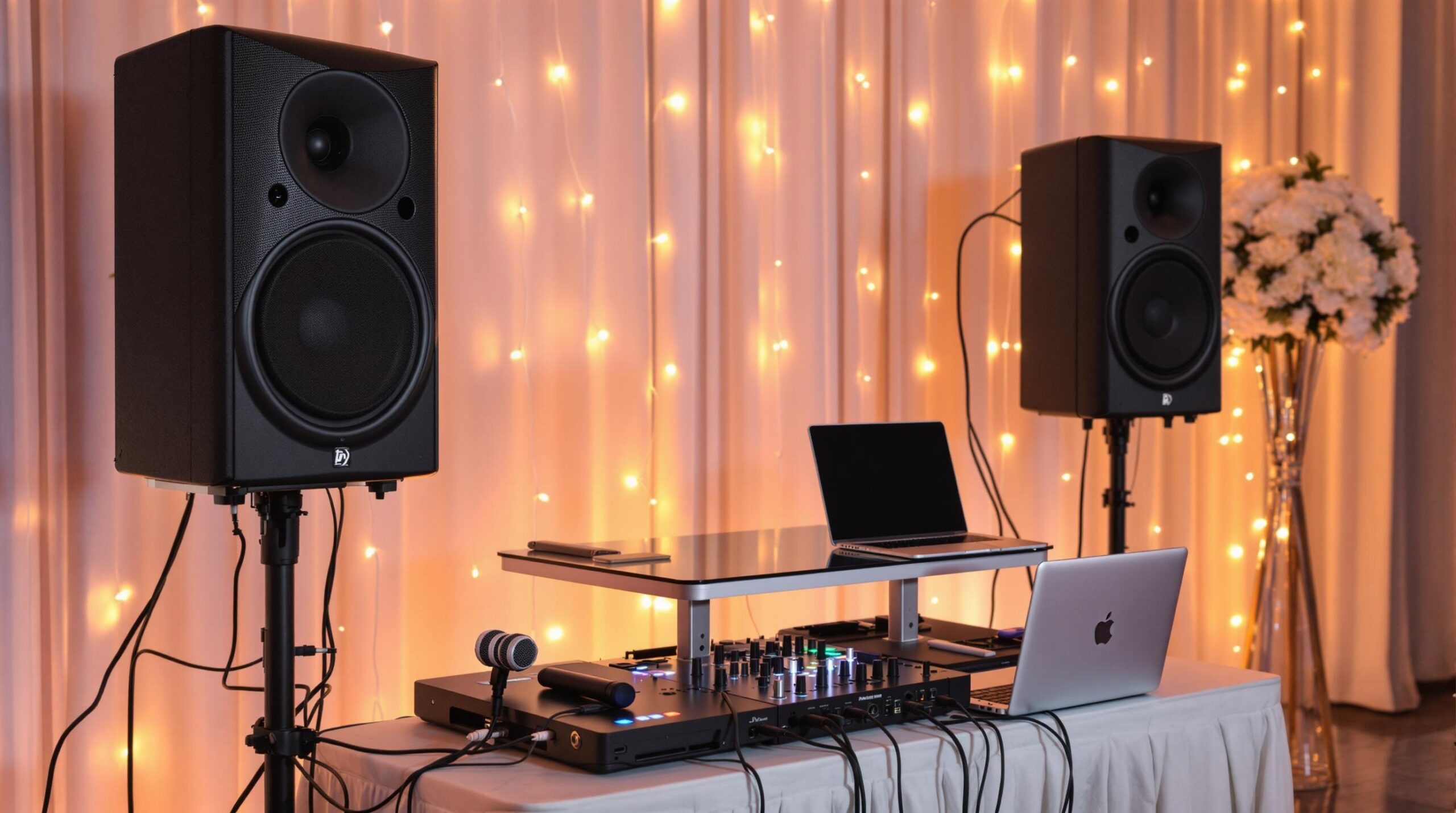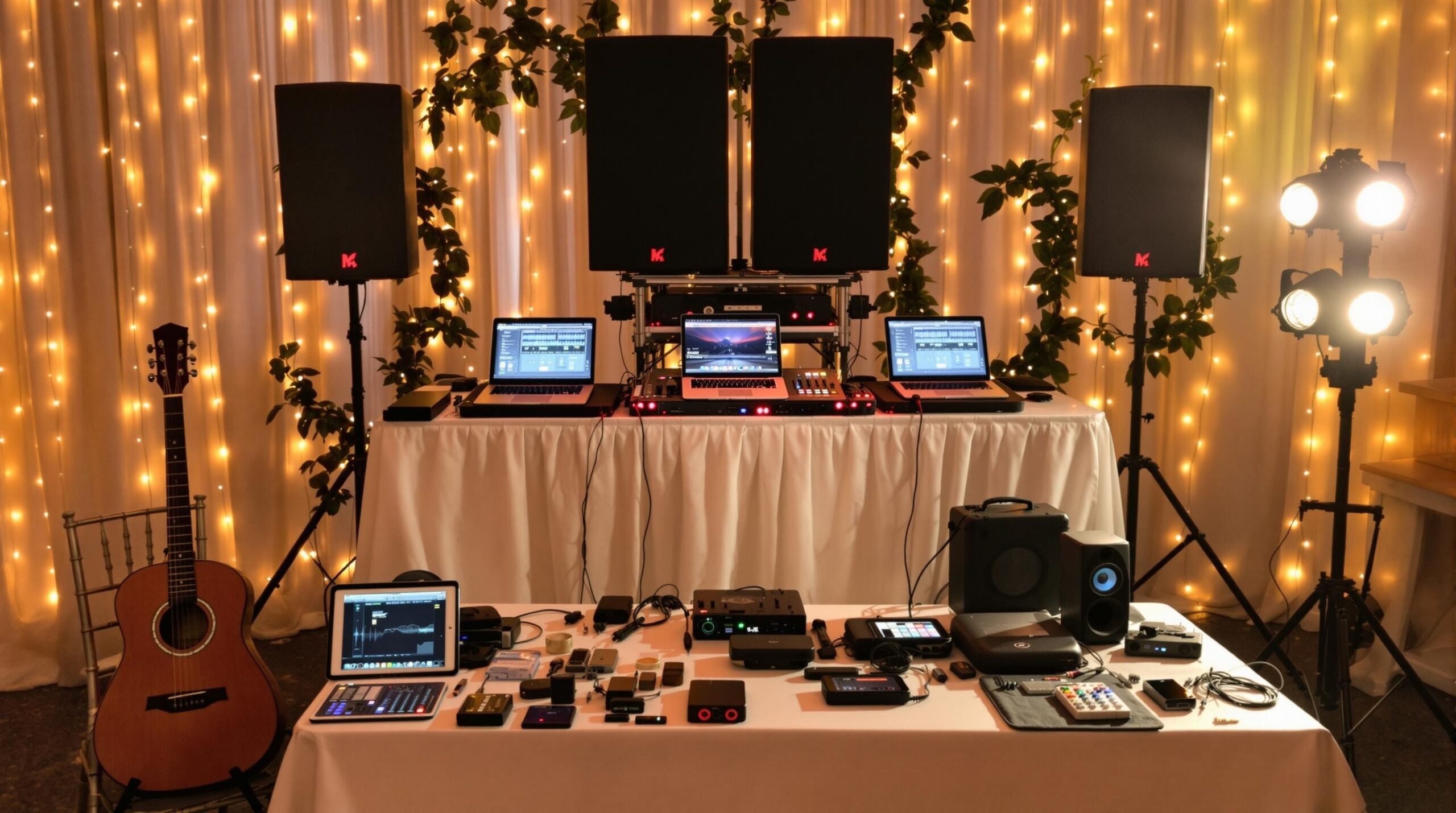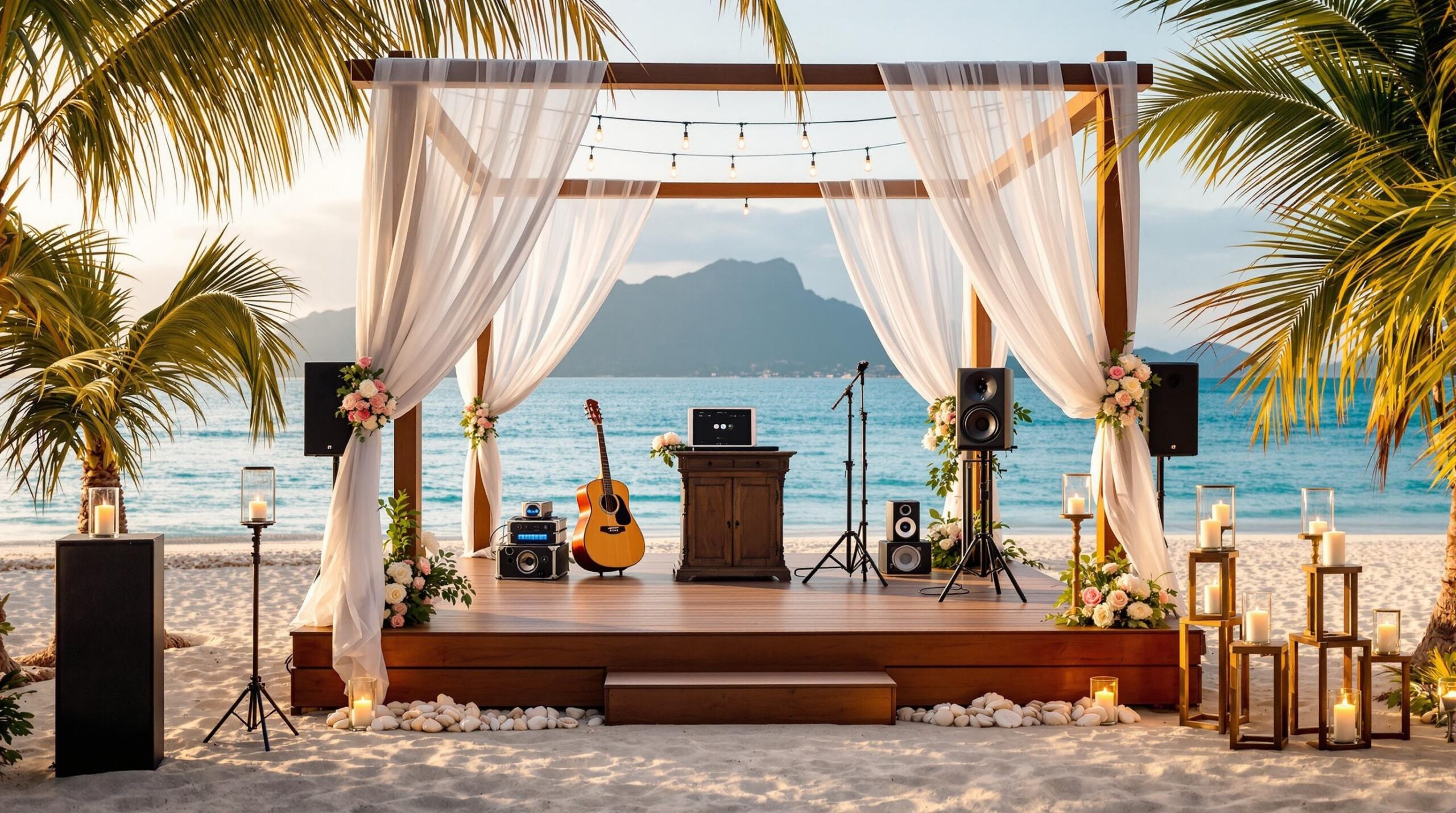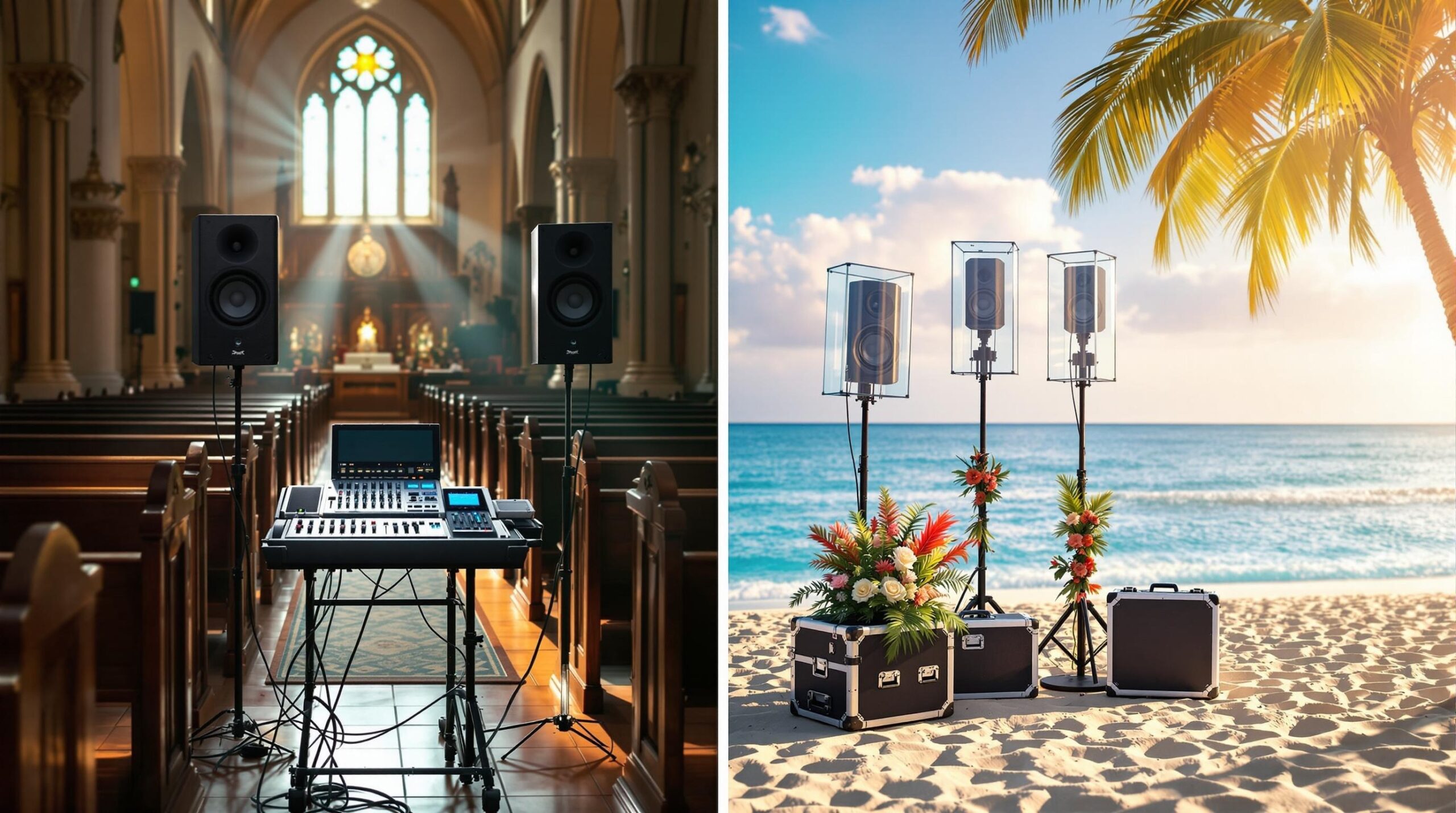Music sets the foundation for memorable wedding dinners. The right playlist creates natural conversation flow while maintaining an elegant atmosphere that matches your celebration style.
Choosing the Right Musical Genre Mix
Background music during dinner requires careful genre selection to please diverse guest groups. A balanced mix of jazz standards, light classical, and soft contemporary hits works well for most wedding receptions.
- Jazz Standards (40% of playlist): Think Diana Krall, Michael Bublé, Frank Sinatra
- Light Classical (30% of playlist): String quartet versions of popular songs
- Soft Contemporary (30% of playlist): Acoustic versions of modern hits
Volume and Timing Considerations
Perfect dinner music stays in the background at conversation-friendly levels. The ideal volume allows guests seated 3 feet apart to chat comfortably without raising their voices.
| Dinner Phase | Volume Level | Music Style |
|---|---|---|
| Seating (15 mins) | Medium-Low | Upbeat Instrumental |
| Main Course (45 mins) | Low | Soft Jazz/Classical |
| Dessert (30 mins) | Medium | Contemporary Covers |
Live Music vs. Playlist Options
Live musicians add sophistication but require careful planning and budget consideration. A string quartet or jazz trio offers elegance, while a skilled solo pianist provides flexibility at a lower cost.
- Live Music Benefits: Creates ambiance, adjusts to dinner timing, handles unexpected schedule changes
- Playlist Benefits: Cost-effective, consistent sound quality, broader song selection
Professional playlists can be equally effective when created with proper attention to song transitions and mood progression. Consider working with a wedding DJ to craft the perfect dinner soundtrack.
Quick Tips for Playlist Creation
- Avoid songs with dramatic volume changes
- Select instrumentals for 60% of dinner music
- Include familiar melodies in sophisticated arrangements
- Create smooth transitions between genres
Working with Musicians and DJs
Professional musicians and DJs know how to read the room and adjust dinner music accordingly. A clear communication plan ensures seamless transitions between dinner phases and special moments.
- Pre-dinner briefing: Review timeline, musical preferences, and cues
- Sound check: Test acoustics and volume levels before guests arrive
- Backup plans: Have alternative arrangements for outdoor settings
Equipment and Sound Setup
Proper speaker placement and sound equipment make a significant difference in dinner music quality. Strategic positioning helps create even sound distribution without overwhelming any table.
| Space Type | Speaker Setup | Considerations |
|---|---|---|
| Indoor Ballroom | Corner mounting | Echo reduction |
| Outdoor Tent | Elevated stands | Weather protection |
| Mixed Spaces | Zoned systems | Volume control |
Handling Special Moments and Transitions
Dinner music should smoothly integrate with toasts, speeches, and other special moments. Create clear signals for volume adjustments and song transitions.
- Toast preparation: Fade music 15 seconds before scheduled speeches
- Photo sessions: Maintain ambient background levels
- Cake cutting: Transition to upbeat selection
Creating the Perfect Musical Timeline
A well-planned timeline ensures dinner music enhances rather than interrupts the celebration. Document key moments and corresponding musical changes.
Sample Timeline Structure
- 6:00 PM: Ambient seating music begins
- 6:15 PM: Lower volume for welcome toast
- 6:45 PM: Transition to main course selections
- 7:30 PM: Gradual shift to livelier dessert music
- 8:00 PM: Seamless transition to dancing playlist
Pro tip: Build in 5-minute buffer zones between major transitions to accommodate timing changes.

